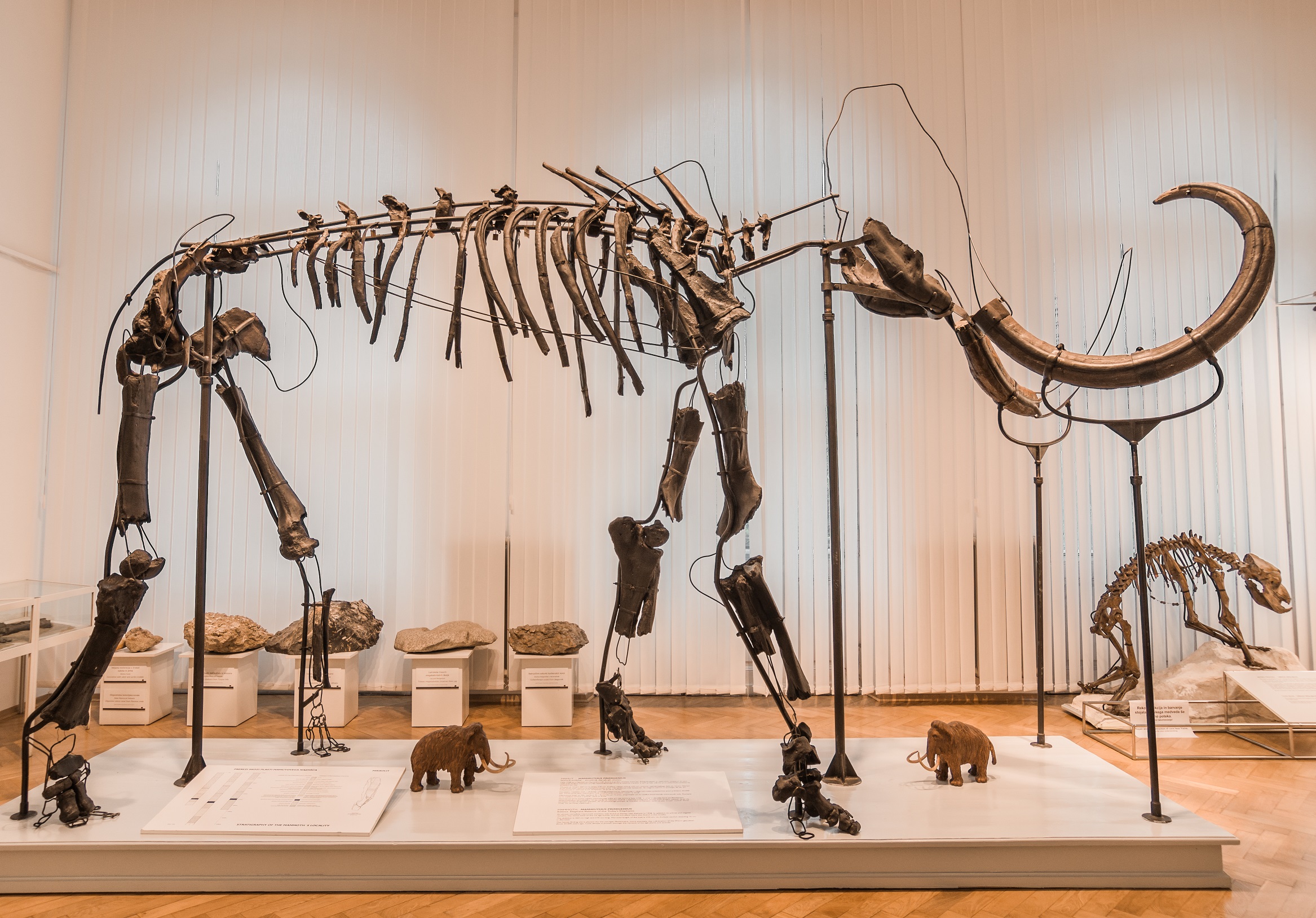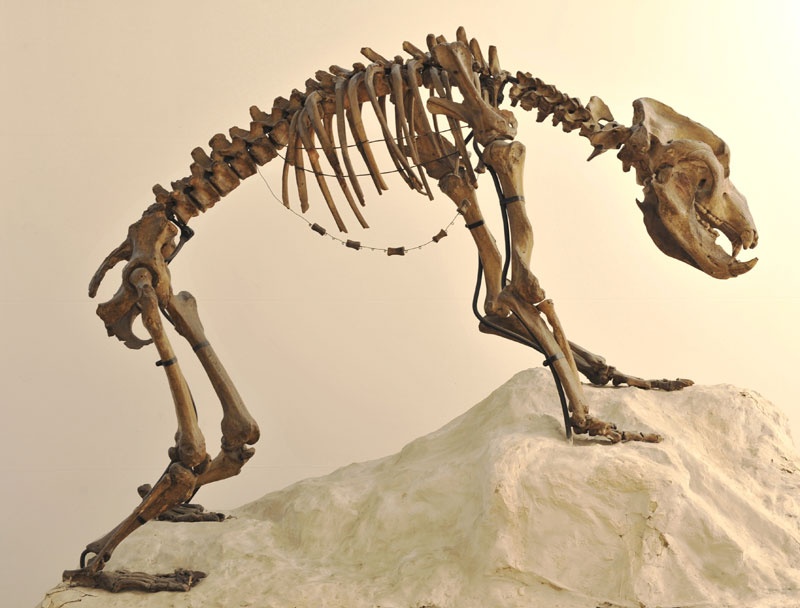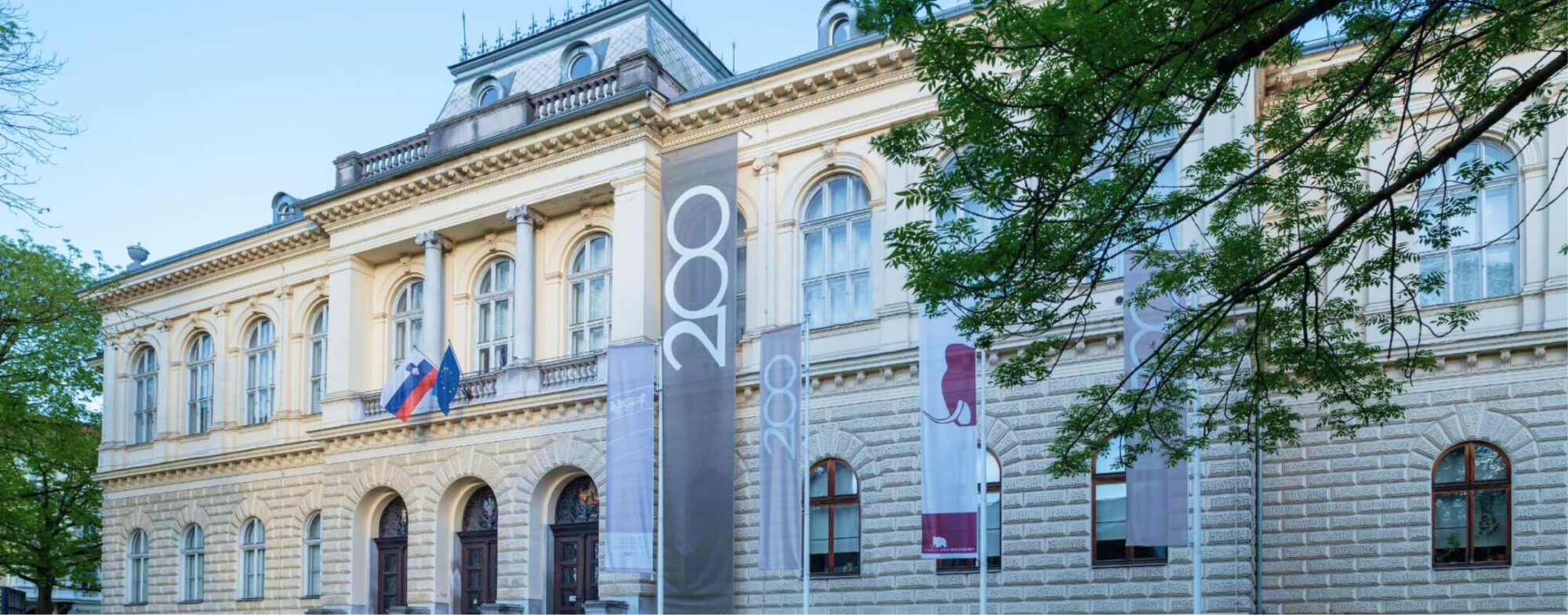The exhibition hall, in which the Earth’s history is presented, is thematically divided into two parts. With its nine panels, the first part acquaints us with some of the main geological phenomena, which will help us to understand the Earth’s structure, its age as well as the origin and meaning of the fossils. Apart from that, it will help us to get an insight into the development of life during different geological periods, into the geological structure of Slovenian territory and, last but not least, how very important is the knowledge of geology for the economy.
The second part of the exhibition is devoted to palaeontology. The exhibited fossils, mostly from Slovenian sites, bear witness to the development of fauna and flora in the long period of the Earth’s history, which is roughly separated into three eras or epochs: the Palaeozoic, Mesozoic and Cenozoic.
Each period is presented with fossils, mainly from Slovenian sites. In the background of display cases, there are brief explanations concerning some animal groups’ characteristics of a certain period. The upper series of large black and white pictures attempt to depict life on land and in the seas during a distinct period.
The first five display cases are dedicated to the Palaeozoic fossils. Amongst them, let us mention foraminifers, corals, gastropods, sea lilies, lampshells and trilobites from the vicinity of Jesenice in the Gorenjska region, which are particularly Palaeozoic characteristics of this period, and of course, remains of some significant Palaeozoan plants from the Posavje folds in central Slovenia.
The Mesozoic is represented by fossils in the next six display cases. Here, too, some different animal and plant fossils are exhibited. Amongst the fossils, most characteristic of our territory, are the Triassic gastropods from the vicinity of Mežica, Jurassic ammonites from the surroundings of Triglav Lakes, Jurassic and Cretaceous gastropods from Trnovski Forest, Cretaceous and Jurassic bivalves and gastropods from the vicinity of Sežana, and remains of vertebrates, mainly fishes, from the Karst in western Slovenia. A Triassic fish is exhibited separately in the centre of the room.
The Cenozoic, the period especially rich with fossils, is presented in the last few display cases. Here, some otherwise rare remains of Tertiary plants are exhibited, as well as very diverse fossils from the animal kingdom: big foraminifers, various gastropods, bivalves, corals, sea urchins, a starfish, remains of sea and freshwater fishes, as well as remains of land vertebrates. The Tertiary vertebrates are represented by remains of different fishes, by the tooth of a fossil elephant–mastodon, and by the skeleton of a baleen whale, exhibited in a separate display case. The latter two were found in northeastern Slovenia. Several vertebrate species originate from the Quaternary period. Exhibited here are Pleistocene fishes, remains of the Cave Lion, Broad-fronted Moose, Ice Age rhinoceros, and a Mammoth tooth.
Pleistocene-age specimens include standalone mammoth and cave bear skeletons. The Holocene fossils in the last display case originate from the sites at Ljubljansko barje – the Ljubljana Marsh.

Mammoth Skeleton

Cave Bear Skeleton


